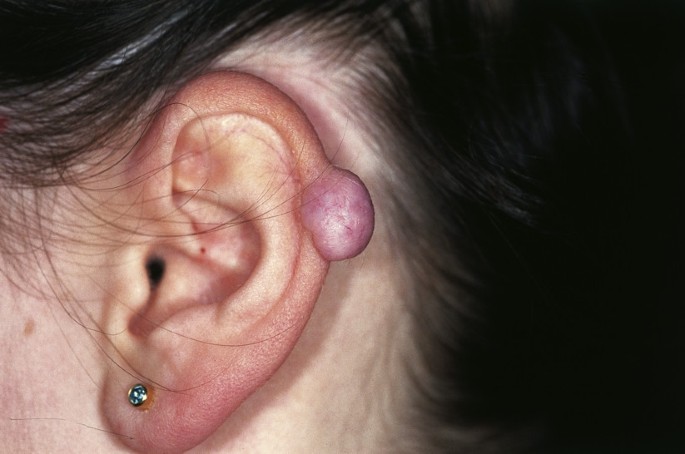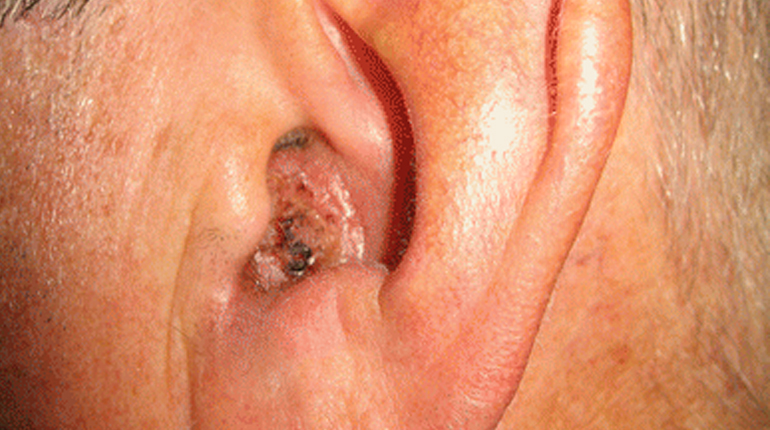ST6. Ear Tumors: Recognizing Symptoms, Understanding Types & Exploring Treatment Options
Ear tumors are abnormal growths in the ear that can affect different parts of the auditory system. Although they can be rare, understanding the symptoms, types, and treatment options is essential for early detection and effective management. In this guide, we’ll break down what ear tumors are, the warning signs to look for, the potential causes and risk factors, and the available treatment methods.
Symptoms of Ear Tumors
The symptoms of an ear tumor can vary widely depending on the tumor’s type and its location within the ear. Common warning signs include:
- Visible Bump: A lump or bump on the outer part of your ear.
- Dizziness or Balance Problems: Issues with equilibrium that may indicate inner ear involvement.
- Ear Bleeding or Discharge: Unexplained fluid or blood coming from the ear.
- Ear Pain: Persistent pain or discomfort in the ear.
- Headaches: Regular or severe headaches that may be linked to tumor pressure.
- Hearing Loss: Reduced hearing ability or a sudden drop in hearing.
- Nonhealing Wounds or Sores: Lesions on the ear that do not heal over time.
- Skin Changes: Discoloration, new moles, or changes to existing moles on the ear.
- Swollen Lymph Nodes: Enlarged lymph nodes near the ear, which can indicate the body’s response to an abnormal growth.
- Tinnitus: Ringing or buzzing in the ears.
- Weak Facial Muscles: Drooping or weakness on one side of the face if nerves are affected.
Early detection of these symptoms can be crucial for preserving hearing and preventing further complications.
What Causes an Ear Tumor?

Ear tumors develop when the body’s cell production becomes imbalanced—new cells are produced too quickly, or old, damaged cells fail to die off. This results in a cluster of cells that forms a tumor. There are two main types:
- Benign Ear Tumors: These are noncancerous growths that generally do not spread. Although they may still cause discomfort or cosmetic concerns, they are typically less aggressive.
- Malignant (Cancerous) Ear Tumors: In these cases, the cells grow uncontrollably and can invade nearby tissues. If not treated, malignant tumors may spread to other parts of the body (metastasis), posing serious health risks.
The underlying biological processes can vary, but it is the uncontrolled cell growth that primarily leads to the formation of an ear tumor.
Risk Factors for Ear Tumors

Ear tumors can affect individuals of all ages, including children, though certain factors may increase the likelihood of their development:
- Chronic Ear Infections: Persistent infections can lead to inflammation, which may promote abnormal cell growth.
- Ear Piercings: Repeated trauma or infections from piercings can contribute to tumor development.
- Inherited Conditions: Genetic disorders like neurofibromatosis (NF) can predispose individuals to developing various tumors, including those in the ear.
- Prior Radiation Exposure: Exposure to radiation, particularly in the head and neck area, increases the risk.
- Frequent Cold Water Exposure: Activities like scuba diving can lead to conditions such as “surfer’s ear,” where prolonged exposure to cold water may contribute to tumor formation.
- Smoking: Both active smoking and exposure to secondhand smoke have been linked to an increased risk of developing ear tumors.
Understanding these risk factors can help in taking preventative measures and ensuring regular monitoring if you are at higher risk.
Complications Associated with Ear Tumors

Even non-cancerous ear tumors can cause significant complications if left untreated. Some potential issues include:
- Hearing Loss: Tumors can interfere with the structures in the ear that are responsible for hearing, leading to partial or complete hearing loss.
- Frequent Infections: A tumor may disrupt normal ear function, making it more susceptible to infections.
- Balance Disorders: When a tumor affects the inner ear, which is crucial for maintaining balance, patients may experience dizziness or vertigo.
- Facial Nerve Damage: Tumors near facial nerves can cause weakness or paralysis in the muscles of the face.
- Metastasis: In the case of malignant tumors, there is a risk that cancerous cells could spread to other parts of the body, significantly complicating treatment and prognosis.
Early diagnosis and treatment are essential to prevent these complications and preserve overall ear function.
Types of Ear Tumors
Ear tumors can occur in various parts of the ear, each with distinct characteristics:
1. External Ear Tumors
- Description: These tumors occur on the outer ear (pinna) or ear canal.
- Common Symptoms: Visible lumps, skin changes, and ear pain.
- Treatment Options: Often managed with surgical removal, especially if the tumor is benign.
2. Middle Ear Tumors
- Description: Found within the middle ear, these tumors may affect hearing and balance.
- Common Symptoms: Hearing loss, tinnitus, and ear discharge.
- Treatment Options: Depending on size and nature, treatment may include surgery or radiation.
3. Inner Ear Tumors
- Description: These are less common but can have serious implications due to their proximity to vital nerves.
- Common Symptoms: Dizziness, balance issues, and potential facial nerve involvement.
- Treatment Options: Often require specialized surgical approaches and, in some cases, radiation therapy.
Differentiating between these types is crucial because treatment strategies and outcomes can vary significantly.
Treatment Options for Ear Tumors

The treatment for an ear tumor depends on the tumor’s type (benign vs. malignant), location, size, and the overall health of the patient. Common treatment modalities include:
Surgical Removal
- Purpose: To excise the tumor and preserve as much ear function as possible.
- Procedure: Depending on the tumor’s location, surgery can range from minimally invasive procedures to more complex operations.
- Considerations: Surgery is often the first line of treatment, especially for benign tumors.
Radiation Therapy
- Purpose: Used primarily for malignant tumors or when surgical removal is incomplete.
- Procedure: Involves targeted radiation to kill cancerous cells while minimizing damage to surrounding tissues.
- Considerations: May be used in combination with surgery for improved outcomes.
Chemotherapy
- Purpose: Utilized for malignant ear tumors that have spread or cannot be completely removed by surgery.
- Procedure: Involves systemic treatment with drugs that target rapidly dividing cells.
- Considerations: Often combined with other therapies to enhance effectiveness.
Monitoring and Follow-Up
- Purpose: In cases where the tumor is benign and not causing significant symptoms, a “watchful waiting” approach might be recommended.
- Procedure: Regular check-ups and imaging tests help monitor the tumor’s progression.
- Considerations: This approach minimizes the risk of overtreatment while ensuring that any changes in the tumor’s behavior are promptly addressed.
A personalized treatment plan developed by your healthcare provider is essential, as each case can be unique.
Ear tumors, while potentially serious, can often be managed effectively with early detection and a tailored treatment approach. Recognizing the symptoms—such as ear pain, hearing loss, and visible lumps—is the first step toward seeking medical evaluation. Whether the tumor is benign or malignant, understanding the risk factors, types, and potential complications is crucial for informed decision-making.
If you experience any of the symptoms listed or are concerned about your risk factors, it’s important to consult with a healthcare provider immediately. Early diagnosis and intervention can make a significant difference in preserving hearing, maintaining balance, and ensuring overall quality of life.
Stay informed, and take proactive steps toward protecting your ear health. Your ears play a vital role in your overall well-being—don’t ignore the warning signs.
For more detailed information on ear health and treatment options, continue to explore our health resources or consult with a specialist in otolaryngology. Early intervention is key to managing ear tumors and ensuring a healthy future.













